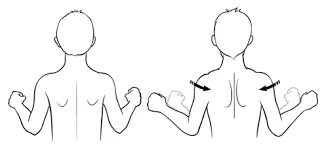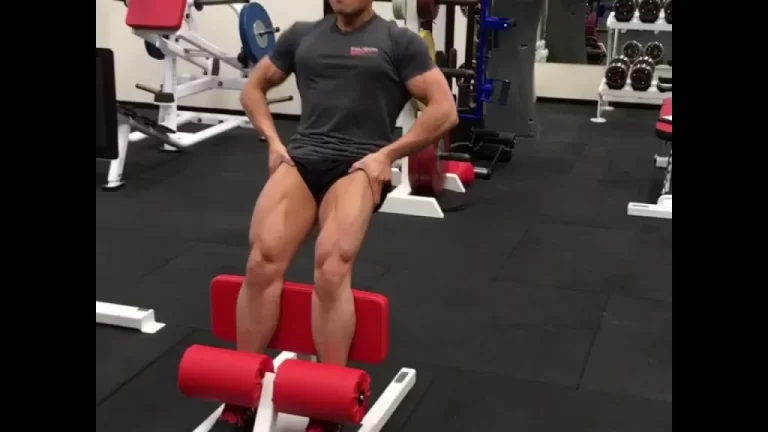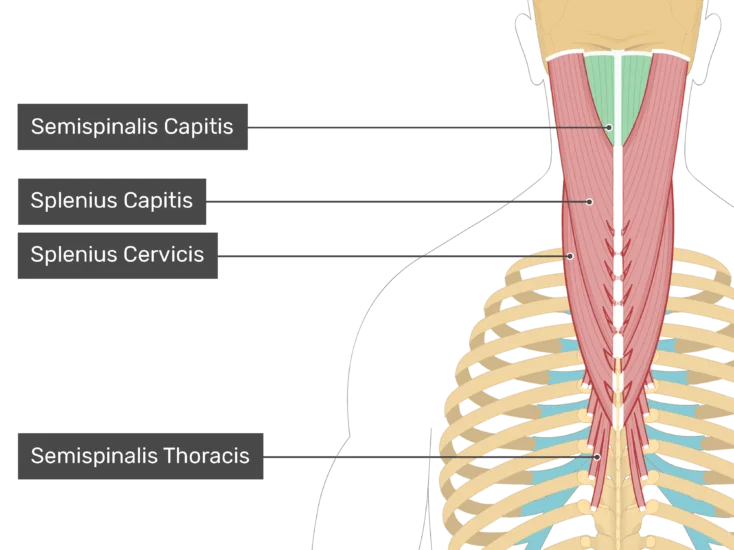12 Best Scapular Retraction Exercise
Table of Contents
Introduction
Scapular retraction exercises are essential components of many fitness and rehabilitation routines. They focus on strengthening and stabilizing the muscles that retract or squeeze the shoulder blades together, promoting better posture, shoulder health, and overall upper body strength. These exercises are particularly valuable for individuals who spend extended periods sitting or working at a computer, as they help counteract the effects of poor posture.
In this introduction, we’ll provide an overview of scapular retraction exercises, their benefits, and how they can be incorporated into your fitness or rehabilitation regimen. Whether you’re an athlete looking to enhance your performance, someone seeking relief from shoulder pain, or simply interested in improving your posture, scapular retraction exercises can be a valuable addition to your workout routine.
Scapular Retraction Definition:
- Scapular retraction is the movement of the scapula, also referred to as the shoulder blade, towards the spine. To prevent any shoulder elevation or shrugging, perform this exercise with your shoulders back and down.
- Scapular retraction is the act of pulling the scapulae, or shoulder blades, inside and towards the spine, Without shrugging up and away from the ears.
We are incredibly skilled at scapular protraction and equally unsuccessful at scapular retraction because of modern lifestyles and rigorous exercise regimens. The latter is crucial for the appropriate movement of the shoulder blades, though. In order to restore the shoulder blades’ normal functionality, Southgate Physio tries to include scapular retraction as part of the rehabilitation procedure whenever a patient presents with shoulder problems.
Here is a fantastic workout to add to your program to get rid of your forward head and shoulders.
With this workout, the rhomboids, lower trapezius, and serratus anterior muscles need to be targeted. Those with this aberrant posture have particularly weak muscles in these areas. The upper trapezius and levator scapulae muscles might tighten or get overused when these muscles weaken. The scapula may “flare out” or “wing” as a result, and muscular “knots” or “trigger points” may form in the upper back.
You can do this workout while sitting or standing up straight. Next, bring your shoulder blades downward as if putting them in your back pockets by squeezing them together.
There is one motion that we always strive to enhance straight away when working with clients who have shoulder issues, and that motion is scapular retraction. Simple shoulder exercises that include an emphasis on alignment and retraining can frequently help.
Utilizing a resistance band (by fastening the center of the band to the wall or door and then holding the ends of the band in each hand) will allow you to modify this exercise.
Sitting rows, flies, and Bruegger’s stance are comparable exercises to encourage scapular retraction.
Shoulder Joint Therapy:
Contact Southgate Physio in North London if you’ve been experiencing any sort of shoulder problems.
- Scapular Retraction: What Is It and Why Is It Important?
- People immediately think of abdominal muscles when we talk about having strong core muscles. The scapula, which is a part of your body’s shoulders, acts as a “core” for them and aids in preserving the stability and general strength of the rest of the arm and shoulders.
- Scapular retraction is the act of drawing the scapulae (or shoulder blades) in the direction of the spine without raising the shoulders. Scapular protraction, or the opposing movement of the scapulae away from the spine, is a common occurrence in our daily activities.
- Because extended scapulae restrict the range of motion in your shoulder joints, it is crucial to be able to retract them. Lifting your arms out to the side is difficult if your scapulae are protracted. Because your thoracic spine is being forced into kyphosis by the weight of your arms, it can also be quite difficult to stand up straight. Blood flow and nerve transmission into and out of your hands can be impeded by protracted scapulae (for example, in cases of thoracic outlet syndrome or carpal tunnel syndrome).
- Being able to pull your scapulae into the right posture allows you to breathe and move around freely without your arms physically dragging you down.
Scapular Pain
It is extremely difficult for us to move our shoulder joints normally when we have protracted scapulae. You’ll detect bad posture, difficulties raising your arms, difficulty standing up straight, and other symptoms. Additionally, scapular protraction impairs blood flow to the upper arms, making it challenging to move your arms normally.
- Scapular Retraction: How Can It Be Improved?
- As with other ailments, consistent practice is necessary to improve scapular retraction. You can attempt these three exercises at home to improve scapular retraction after we consult our specialists.
- You exercise. Like anything else, improvement comes with practice. Three exercises that can start teaching you how to better retract your scapulae are provided below. Keep in mind that progress requires time as you practice these exercises. Humans need time to build their strength and coordination so they can learn to walk, just as they need time to pick up new motions.
Scapula Retraction Technique:
- Keeping your shoulders down and back while sitting up straight in your chair.
- Now put your hands on your hips and circle your upper back while moving your shoulders forward.
- Pulling your elbows back and pressing your shoulder blades together, push your shoulders back and down at this point.
- Make sure to maintain a flat back throughout this exercise, and repeat for the
Retraction Of Scapula
As mentioned above, the scapulae retract when they migrate inward towards the spine. Scapular Adduction, commonly known as the retraction of the scapula, is crucial in numerous workouts including the row and bench press. Retraction of the Scapula is one of the exercises used to strengthen the muscles and give more stability to the shoulder.
Scapular Retraction Muscles:
- Muscle Worked
- Arms, shoulders, and back
- The Trapezius, Rhomboids, and Latissimus Dorsi are the scapular retraction muscles. All of them are back muscles.
- These muscles are Activated during Scapular Retraction.
Scapular Retraction Test:
- To determine the condition of the rotator cuff, one diagnostic test is the Scapular Retraction Test (SRT). A doctor administers the test to a patient. The patient will start out on an examination table sitting up straight. The doctor will stabilize the medial scapular border with their hand while placing their fingertips on the clavicle. In order to stabilize the patient, the doctor’s forearm will also be pushed against the patient’s scapula.
- The patient will then raise their arm to a 90-degree angle on the same side that the doctor is inspecting. The doctor will next press down on the patient’s extended arm with their free arm. If the pain is lessened, the test is deemed successful. The Empty Can Test is another name for this test.
Scapular Retraction Exercises:
Standing Rows

- Wrap a resistance band around a strong anchor, such as a pole.
- Lower the band to elbow height and take a step back to apply tension.
- Begin by keeping your shoulders down, your back taut, your elbows at a 90-degree angle, and your core engaged.
- As you draw your elbows back, press your shoulder blades together.
- Perform two sets of 10 repetitions each.
Dynamic T and I
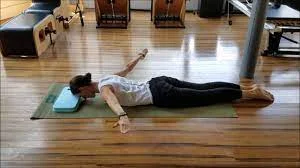
- Begin by lying face down with your arms extended to the sides, forming the letter ‘T’ with your body.
- Lift your arms in a ‘T’ shape and then bring them down to your sides to form a ‘I’ shape.
- Return your arms to the ‘T’ position, then drop them for one second to rest in the ‘T’ position.
- Elevate the arms once again and repeat the exercise for two sets of 10 reps.
- While executing this exercise, make sure not to arch your back or lift your head.
- A folded towel can be used to support the head.
Bilateral External Rotation
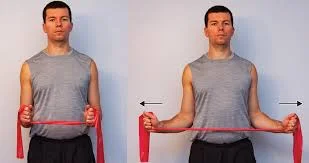
- Begin in an upright position, gripping a resistance band with your shoulders down and back.
- With your elbows at a 90-degree angle, steadily draw the resistance band apart so that your forearms go outwards while your elbows remain tight to the body.
- Keep your shoulders down and back as you perform this movement for two sets of 10 reps.
Scapular Retraction With Band
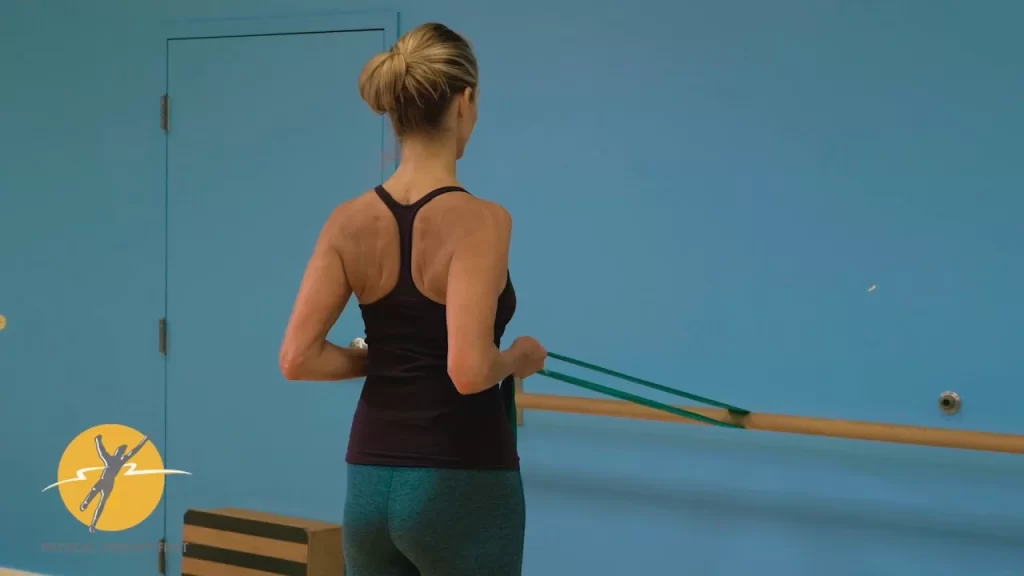
- There are several methods for performing Scapular Retraction with Band.
- Pull Apart is the first scapular retraction with the band.
- Hold a Thera Band or resistance band horizontally in front of your body with both hands.
- Begin by holding the band at chest level and pulling it apart by abducting your arms out to the side.
- As you pull the band apart, squeeze the shoulder blades together.
- Reverse the motion, then get back to your starting position.
- A standing row is another Scapular Retraction with Band exercise.
- This exercise is described above, however, it can also be done seated on a bench if necessary.
Hanging Scapular Retraction
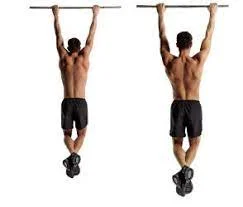
- The Hanging Scapular Retraction exercise will help you enhance your pull-up.
- Hang from a pull-up bar using an overhand grip and your hands shoulder-width apart.
- The ground shouldn’t be touched by your feet at any time.
- Pull the shoulder blades together with caution (Scapular Retraction).
- This will cause the body to rise somewhat.
- Hold this position for at least two counts before relaxing the Scapulae and returning to the starting position.
Scapular Retraction Bench Press

- Maintaining Scapular Retraction during the Bench Press is one approach to improve its effectiveness.
- This allows you to generate greater power during your Bench Press by keeping your arms close to your body and giving more stability to the shoulder.
Hook-Lying Reverse Presses
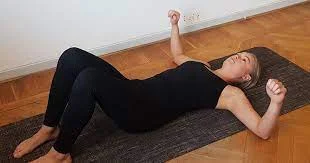
- This exercise aids in the activation of the muscles that retract your shoulder blades.
- This is the most fundamental exercise for regaining control of your shoulder blades.
- Pay particular attention to how the two sides compare.
- One side will have less control over a huge number of people.
- One may appear to have a longer distance to travel than the other.
- This suggests that the muscles on that side are not accustomed to sustaining the appropriate level of activation.
- Every day, we recommend doing 2-3 sets of 10-15 reps.
- Bend your knees and lie flat on the ground with your feet parallel to the ground.
- Bring your arms to your sides like you’re holding a bar above your chest, producing a straight line with your elbows and shoulders.
- Bring your shoulder blades together in one motion without lifting your elbows off the ground.
- Repeat by holding and relaxing.
Passive Scapular Retraction
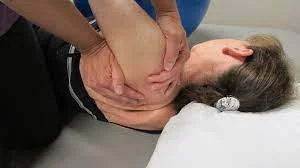
- Begin in a quadruped position (arms below shoulder and knees below hips).
- Maintain the line by keeping your neck and head in line and allowing your chest to slide down.
- Hold this position for a minute to allow the shoulders to adjust.
- Relax and continue for 2 to 3 sets of 10-15 repetitions.
Standing Scapular Retraction
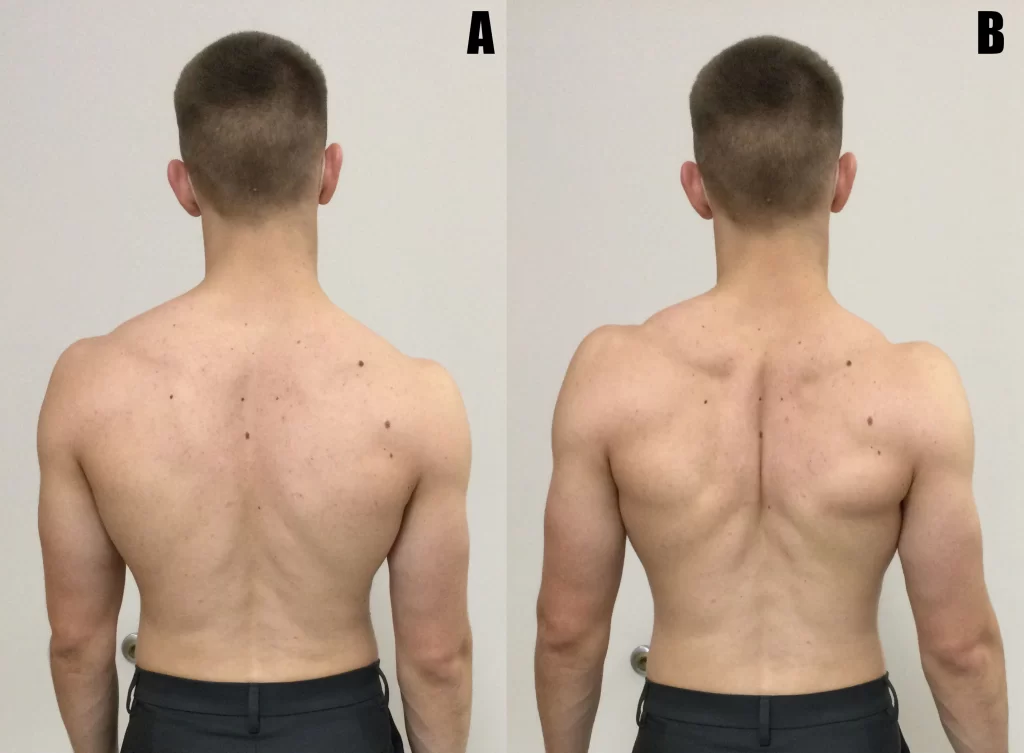
- Stand standing (or against a wall) with your feet apart and retract your shoulder blades without shrugging your shoulders upwards towards your ears.
- This exercise may be done anywhere, and we recommend performing it several times a day to restore normal scapular function.
- After you’ve mastered the reverse presses, you should try scapular retraction in a more practical posture – standing!
- The beauty of this workout is that you can practice it almost any place.
- You can do it at home, at work, at the grocery store, in your car, and so on.
- We normally recommend performing 2-3 sets of 10-15 reps throughout the day.
Quadruped Passive Scapular Retraction
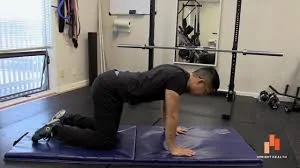
- This exercise trains your shoulder blades to draw in towards your spine and your thoracic spine to stretch.
This can be quite beneficial if you find it impossible to perform any type of scapular retraction without experiencing acute stiffness in the front of the shoulder. - We usually advise holding this position for about a minute.
Prone scapular retraction (Strength and mobility)
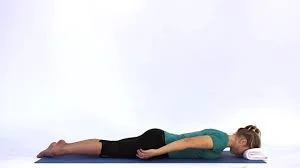
Instructions:
- placing a rolled towel beneath your forehead while lying face down.
- Make sure your arms are relaxed and straight alongside you.
- To perform, bring your shoulder blades together and pinch them back and down.
- Hold for the stated amount of time, then repeat.
- Put a pillow or some towels beneath your tummy if your lower back hurts.
Primary muscles targeted:
- Muscles in the upper back
Main benefits:
The prone scapular retraction, which combines shoulder mobility with upper back strength, is an excellent approach to training the upper back to withstand loads and fatigue from a variety of daily tasks. By improving your shoulder and scapular alignment, you’ll be able to avoid both short-term and long-term pain in this region. It will take some time for the muscles to adjust to the workout, so be persistent and be sure to let your therapist know if you are experiencing any additional pain.
Resistance band scapular retraction
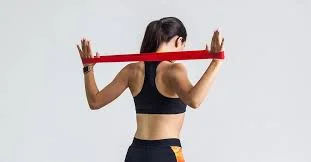
- A terrific exercise for warming up, improving focus before you begin training, and strengthening the mid and upper back is the band scapular retraction movement.
- It’s a movement that emphasizes strengthening and preserving the integrity of your shoulder blades.
- It is essential for everyone to master since, in addition to everything else, it helps your posture.
- The muscles that surround your back and support your spine are what make up your scapulars, also known as shoulder blades.
- It is absurdly advantageous for such a tiny and straightforward movement. Simply learning how to retract correctly can greatly improve all of your upper back exercises. It may be utilized to train your mind-muscle connection, warm up your muscles before working out your upper body, and strengthen your upper back.
Equipment
Resistance band
How do you do it?
- As you raise your arms to around shoulder height, place the band in your hands.
- Without shrugging your shoulders, loosen the band and then tighten it by compressing your scapulars.
- It’s quite alone and challenging to master when you’re first starting out.
- Continue till you succeed.
What issues do people face?
- People frequently utilize their arms, which might cause their elbows to lock out. Some people find it difficult to even connect with those muscles, so they may simply move their shoulders up and down while believing this to be correct.
To get this one right, some effort is required. - Ensure that the band is at the proper height—equivalent to the height of your shoulders—and squeeze your shoulder blades together.
- Builds, Variations, and Corresponding Movements
- Scapular Bar Retractions
- Scapular Band Retractions
Conclusions about scapular retraction
- For just about everyone trying to enhance scapular retraction at a fundamental level, these exercises are a wonderful place to start. It’s crucial to be aware that you can encounter obstacles when learning a new motion. If you encounter obstacles, such as narrow spots that limit your range of motion, you’ll need to look more closely at your specific scenario to enhance your capacity to do this essential motion.
- The most crucial thing to keep in mind is that transformation requires time. When you first begin to retrain your body, don’t give up. To learn new motions will take some time. Even those actions that seem unachievable at the moment will be possible one day!
FAQs
What do scapular retraction exercises accomplish?
Exercises for Scapular Retraction and Scapular Protraction
Exercises called scapular retractions urge you to bring your shoulder blades together and towards your spine. In these workouts, however, the shoulders do not incline upward towards the ears. The primary objectives of these exercises are to maintain the health and strength of the muscles that surround the shoulder blades.
Which muscles pull the scapula back?
The latissimus dorsi, rhomboids, and trapezius muscles all contribute to retraction. The trapezius, levator scapulae, and rhomboid muscles work together to lift the shoulders.
How may scapular retraction be performed at home?
Scapular retraction with shoulder external rotation technique:
1) Start with your elbows bent at a 90-degree angle and your arms just slightly out to the side.
2) Rotate your forearms outward after gently squeezing your shoulder blades together and downward. Hold for a short while. Use three sets of ten, twice daily.
What nerve controls the retraction of the scapula?
The levator scapulae, rhomboid major, and rhomboid minor muscles are all innervated by the dorsal scapular nerve, a motor nerve. These muscles are regarded as periscapular stabilizing muscles because they cooperate dynamically. They each have the ability to elevate and retract the scapula.
References:
1 S. (2023, March 10). Scapular Retraction and Protraction Exercises – All You Need to Know. Southgate physio. https://www.southgatephysio.co.uk/how-to-improve-scapular-retraction/
2 Scapula Retractions Exercise Technique For Seniors | More Life Health — More Life Health – Seniors Health & Fitness. (n.d.). More Life Health – Seniors Health & Fitness. https://morelifehealth.com/scapula-retractions
3 & S. Z. K. (2023, June 12). The Importance of Scapular Retraction and Scapular Protraction. Your House Fitness. https://www.yourhousefitness.com/blog/the-importance-of-scapular-retraction-and-scapular-protraction
4 How to do Standing Scapular Retraction. (n.d.). https://www.getwellen.com/exercises/standing-scapular-retraction
5 Squats-holistic physio fitness exercise. (2020, February 12). Holistic Physio Fitness. https://holisticphysiofitness.com.au/exerciselibrary/prone-scapular-retraction-strength-mobility/
6 R. (2015, March 6). Scapular Retraction Exercise. WordPress.com. https://moundcitychiropractic.com/2015/03/06/scapular-retraction-exercise/
7 Brown, G. (2022, October 23). Scapular Band Retractions – Grace Brown Fitness and Personal Training. Grace Brown Fitness and Personal Training. https://gracebrownfitness.com/scapular-band-retractions/
8 How to improve scapular retraction. (n.d.). https://www.uprighthealth.com/blog/exercises-improve-scapular-retraction

